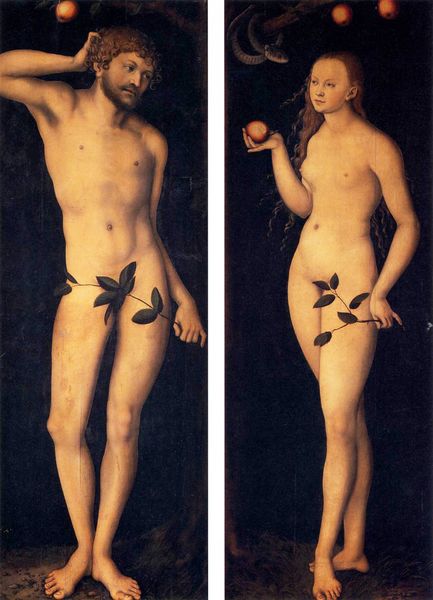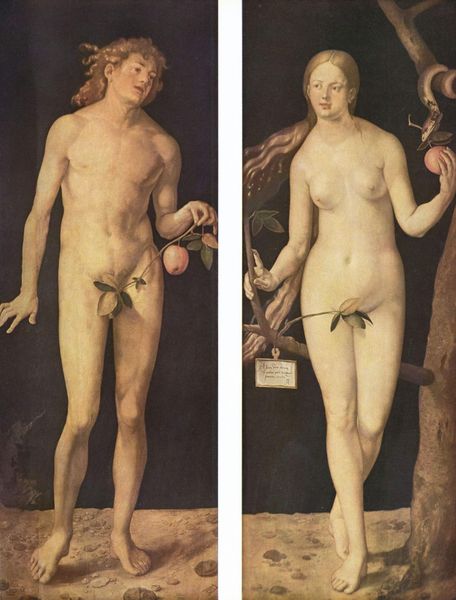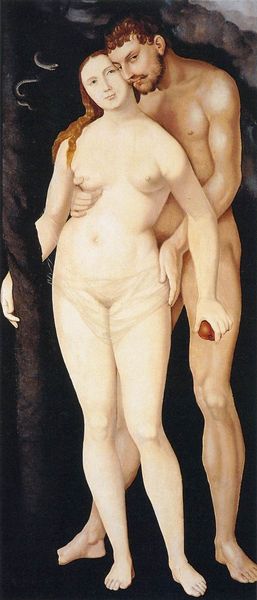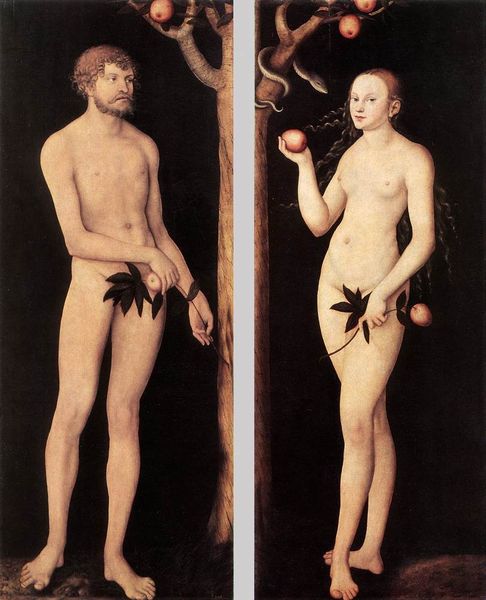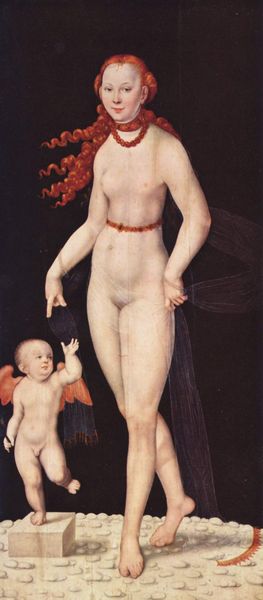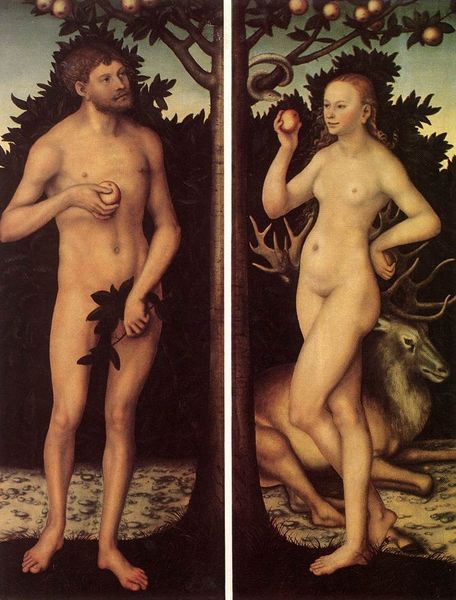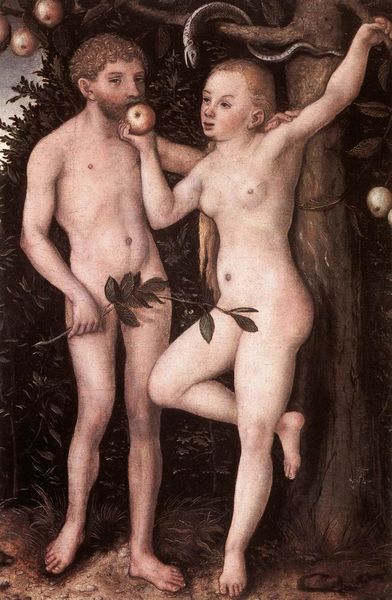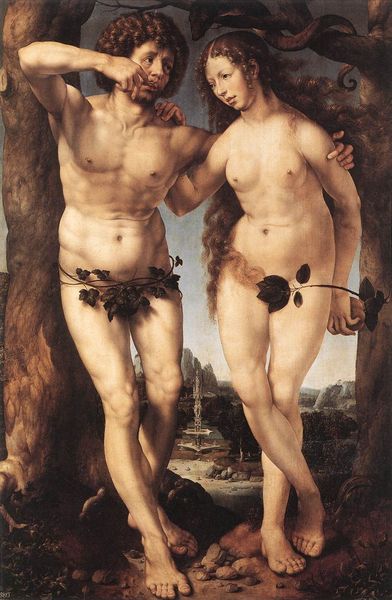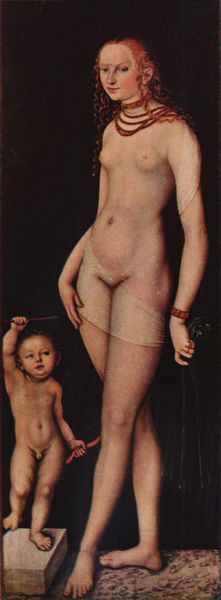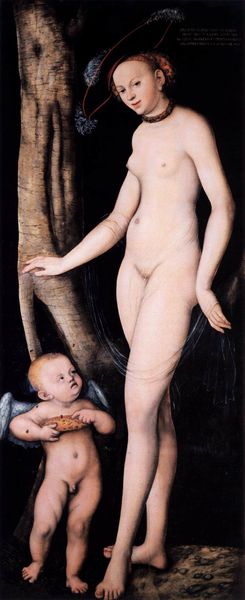
panel, painting, oil-paint
#
portrait
#
panel
#
painting
#
oil-paint
#
figuration
#
muted green
#
flemish
#
human
#
history-painting
#
nude
#
early-renaissance
Dimensions: 69 x 34 cm
Copyright: Public domain
Curator: Here we have Hans Memling's *Adam and Eve*, painted around 1485. They are oil on panel. I'm immediately struck by the cool tones, the relative simplicity of materials—but a rich, subtly manipulated surface. Art Historian: My eyes are drawn to the unsettling serenity of their expressions. There’s a quiet solemnity that speaks volumes about the weight of their act. The apple as the notorious emblem. It all feels loaded, like the quiet before a storm. Curator: Indeed, and looking at the crafting of the panels themselves, one gets the sense of careful selection, almost reverent treatment. The wood grain probably contributed to Memling's interpretation, if we observe its patterns. Consider, too, the economic implications—patronage, workshop practices… Who paid for these materials, and who benefitted from their production? Art Historian: I'm caught up in the presentation of the figures. They are enshrined, each presented in its niche, their nudes not explicitly sexualized but burdened with almost regal self-possession. It echoes a pre-Fall innocence contrasted by the guilt hinted at in their carefully positioned hands, doesn't it? The apple, the leaves... These symbols practically shout "knowledge, shame, humanity". Curator: Of course, Memling, coming from that Flemish tradition, likely knew these biblical narratives would deeply resonate with his audience. But I wonder, too, about his paint mixture—did he grind the pigments himself? How would that act of material manipulation change the final outcome of a piece like this? Furthermore, the level of detail and attention applied here speaks of serious craftsmanship. Art Historian: I think that is important! Think also about those muted greens. Look at their hands and the delicate gestures. Those hands are what capture their struggle with their first bite. Even their poses mirror each other; their internal torment of the first sin seems balanced. Memling definitely placed an emphasis on psychological mirroring here! Curator: Ultimately, a close study of these *Adam and Eve* panels reveals the complexity involved not just in Memling’s artistic vision, but in the collaborative labor and access to materials that shaped its final form. Art Historian: Absolutely. And examining the rich iconographic program gives insights to humanity's shared cultural memory regarding disobedience, self-awareness, and consequence. A lot of ideas are packed into these relatively small pieces.
Comments
No comments
Be the first to comment and join the conversation on the ultimate creative platform.
